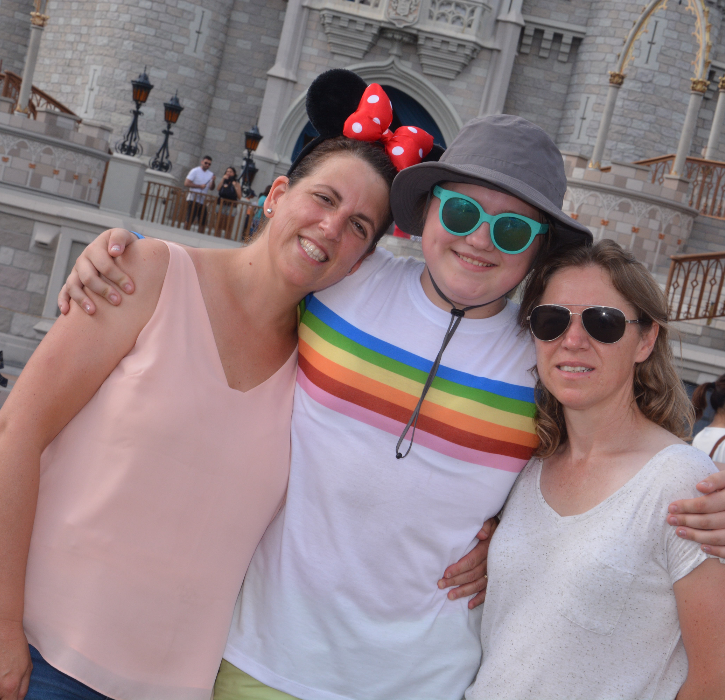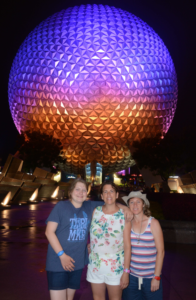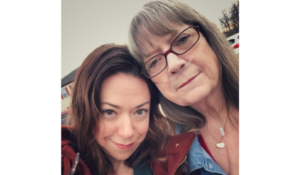Hello! It’s Dena again. In my last post, I shared how our Disney trip last summer was quite therapeutic for us as a family, especially when looking through the eyes of Theraplay®. In this follow-up post, I will look at Theraplay® dimensions of engagement, nurture, and challenge, and show how Disney brings them to life in a magical way.
First stop: engagement
Engagement has to do with connection, being “in sync,” optimum arousal levels, and moments of shared joy. There is no shortage of this at Disney! The magical atmosphere helps tremendously with connection. Adults and children spend less time on their devices. Scrolling on your phone at the water parks especially is not an option! I saw teenagers playing hand games (a hallmark of Theraplay®) in the line at Typhoon Lagoon. At Epcot, a father and son enjoyed the live music while dancing together on the street just outside the pub in the “UK.” At Mickey’s “Fantasmic!” show, the whole crowd, thousands strong, created a Mexican wave. Not only that, it went slow, then fast, then normal speeds–all in sync. People sang a long “whoop” as it went across. It was an opportunity for shared joy, connection, and practicing optimal arousal levels on a mass scale.
You do need to manage this part of the vacation carefully. For children impacted by trauma, overwhelming sensory input paired with ongoing connection can often send them into a hyper (high energy) or hypo (shutdown) arousal state. Pace yourselves so that your child can benefit from the rich opportunities for engagement. Taking it slow is best, and taking breaks is vital.
Second stop: nurture
Nurture has to do with regulation, self-worth, and empathy. Nurture is fundamental to the care a parent provides for their child. In TheraplayÒ, this is always child-centred and provided by the adult or parent. It does not involve the child offering nurture for the parent. In other words, this is where turn-taking takes a break.
The two main Theraplay® hallmarks for nurture include feeding and touch.
Feeding
Can you imagine a place with more edible delights on offer around every corner? So many opportunities to pop a treat into your child’s mouth. We loved sharing chocolate dip and churros. One of the nicest nurturing experiences we’ve had as a family (and I mean ever) was having breakfast with Pooh and Friends. Furry hugs and Mickey pancakes… even my daughter who has always been terrified of life-sized mascots greeted Pooh with a hug and requested an autograph.
Touch
For children impacted by trauma, touch can be a fraught issue. You can decrease the intensity of the experience and help your child to accept touch by taking advantage of your child’s engagement in the sight and sounds of the parks. Here are a few examples:
- a piggyback ride on Dad’s shoulders
- applying sunscreen
- sharing a tube on a waterslide
- squeezing close together on rides
- holding hands in the lazy river
Side note for parents: Disney loves nurturing you. Greetings–“welcome”–and farewells–“have a magical day”–are embodied in all the wonderful ways the cast (staff) endeavour to make your life easier. They will even have your purchases waiting for you at the park exit so you don’t have to carry bags around all day.
Third stop: challenge
Challenge has to do with competence, safe risk, and mastery. Theraplay® shows how challenge can help to regulate the nervous system. At Disney, a great example of this is “hidden Mickeys.” Helping an overstimulated child to narrow his/her focus helps to calm the nervous system by creating gentle dopamine hits whenever a Mickey is spotted. In every park, there are literally hundreds of Mickey shapes hidden everywhere. In fact, the whole layout of one of the parks is actually a hidden Mickey.
There are other, endless opportunities for children and adults to stretch themselves with challenges. Are you brave enough to ride the Tower of Terror? What about at night? Will you greet your hero and ask for their autograph? Can you ride on It’s a Small World without singing? Or race down the toboggan run to see who goes farthest or fastest? Will you explore the caves of Tom Sawyer’s Island?
Extraordinary experiences
Now that my children are grown, I am struck by the importance of the extraordinary experiences we’ve had together. These are the stories we love to tell, the times we relive again and again. This potent glue holds our family together. We took vacations often, and at the time, they felt like hard work mixed with magical moments. (Honestly, I often felt like I needed a vacation afterwards to recover!) Now, looking back, I can see they were worth the effort. I can also see how important it is to keep having extraordinary experiences, writing new stories. We are already planning our next trip to Disney and this time we are even going to have matching t-shirts. Dreams really do come true! “Have a magical day” and thanks for reading.
NB: child refers to children and young people. Parent refers to parent, carer or guardian.




